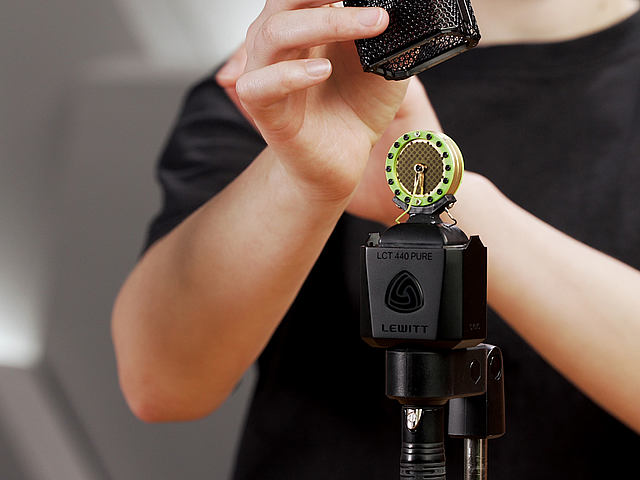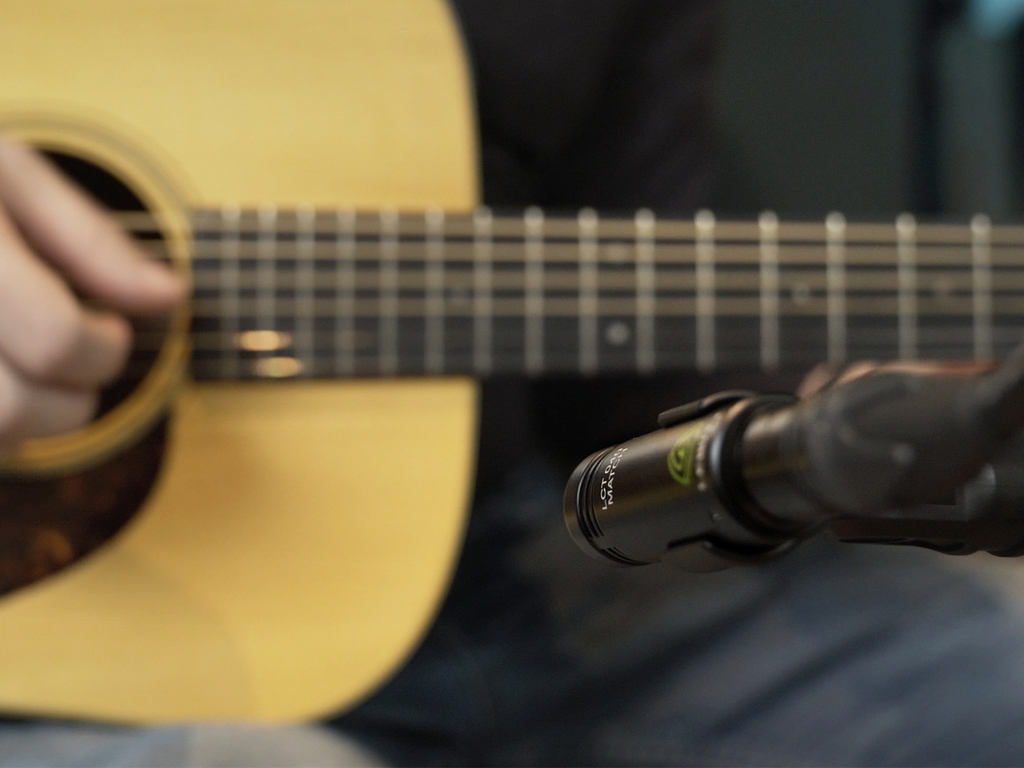
Blog
True love for great sound unites us.
Blog
True love for great sound unites us.

In this blog, you’ll find out how a microphone works.
We’ll talk about the two main types of microphones for recording, dynamic and condenser microphones.
And you’ll also find out why they’re not good “listeners”.
Prefer to watch the video? Check it out below
Every microphone follows the same principle. Sound waves hit a membrane and make it move according to the source.
The energy of the sound wave needs to be converted into an electrical signal or voltage. And, there are different ways of doing this.
1) So, when you start speaking, you start to make a sound.
2) The sound waves then hit the membrane of the microphone.
3) The microphone converts this movement into an electrical signal that we can now use for different purposes such as –
In this blog, we will focus on dynamic and condenser microphones for recording purposes. Of course, there are other types of microphones, but they are less commonly used for recording.
Generally speaking, dynamic microphones are often used in loud environments. Condenser microphones are used for detailed recordings. And you'll find out in a minute why that’s the case.
Listen to the sound samples below and hear the difference for yourself.
Dynamic microphones are mainly front-addressed, meaning that we need to point the mic towards its source like this.

Here’s a typical dynamic handheld microphone that you may often see used by singers on stage.
Under the mesh sits the capsule and its membrane.
You see the foil on the picture? That’s it… the membrane.
A dynamic microphone has a pretty robust capsule, and is therefore commonly used for live concerts.


1) The back of the membrane is attached to a coil of wire.
2) Both the diaphragm and coil move back and forth according to the incoming sound waves.
3) The coil is placed inside a magnetic field, and when it moves an electrical signal is induced.
If you think about it, it may remind you of the way a loudspeaker works. That’s because they both work with the same acoustic principle, and you could say that a dynamic microphone is a reversed loudspeaker.
Dynamic microphones are extremely sturdy and perfect for
Condenser microphones are mostly used to create detailed recordings in the studio. There are condenser mics with small diaphragms and there are microphones with large diaphragms.
Here’s a typical large diaphragm microphone that you may often see in the studio when recording vocals. These are mostly side-addressed.

The next one here, is a small diaphragm condenser microphone. It’s also called a pencil mic due to its form. These are perfect for recording acoustic instruments and are front-addressed.

Let’s check out how a condenser microphone works.
It doesn’t matter if it’s a small or large diaphragm condenser microphone - both work the same.
Here is a large diaphragm condenser microphone. We removed the mesh to see what’s inside.

The membrane is extremely thin and light and therefore reacts very accurately to sound. That’s why condenser mics sound so detailed.
Small diaphragm condenser mics are perfect for acoustic instruments, like guitars or strings.
Large diaphragm condenser mics are a go-to when recording studio vocals.
And now, the shocking truth! Microphones can’t hear! Yes, you heard correctly.
Hearing is more than just receiving sound waves. It also includes selective attention in the auditory system.
This is what we refer to as the cocktail party effect.
Imagine you’re at a party and you are having a conversation. There’s a vibe… some music in the background, there are also other people having conversations, ambient noises and so on.
With all of this going on at once, how is it that you’re still able to focus on the conversation that you’re having?
Well, this is possible because your brain is able to “tune out” sounds that it doesn’t want to focus on, meaning that you hear selectively.
A microphone can’t do that; it does not have the capability to select its attention.
That’s why you always have to pay attention to noises around you before you hit the record button or start streaming your channel.
Train your ears to work like a microphone and pick up everything you can.
Become the microphone, and you’ll immediately improve the quality of your recordings.
Check for noise you do not usually pay attention to.
Just remember, it is not about having the perfect gear or environment but making the most out of what you have.
If you want to learn even more about microphones, check out other interesting topics on the microphone basics page!